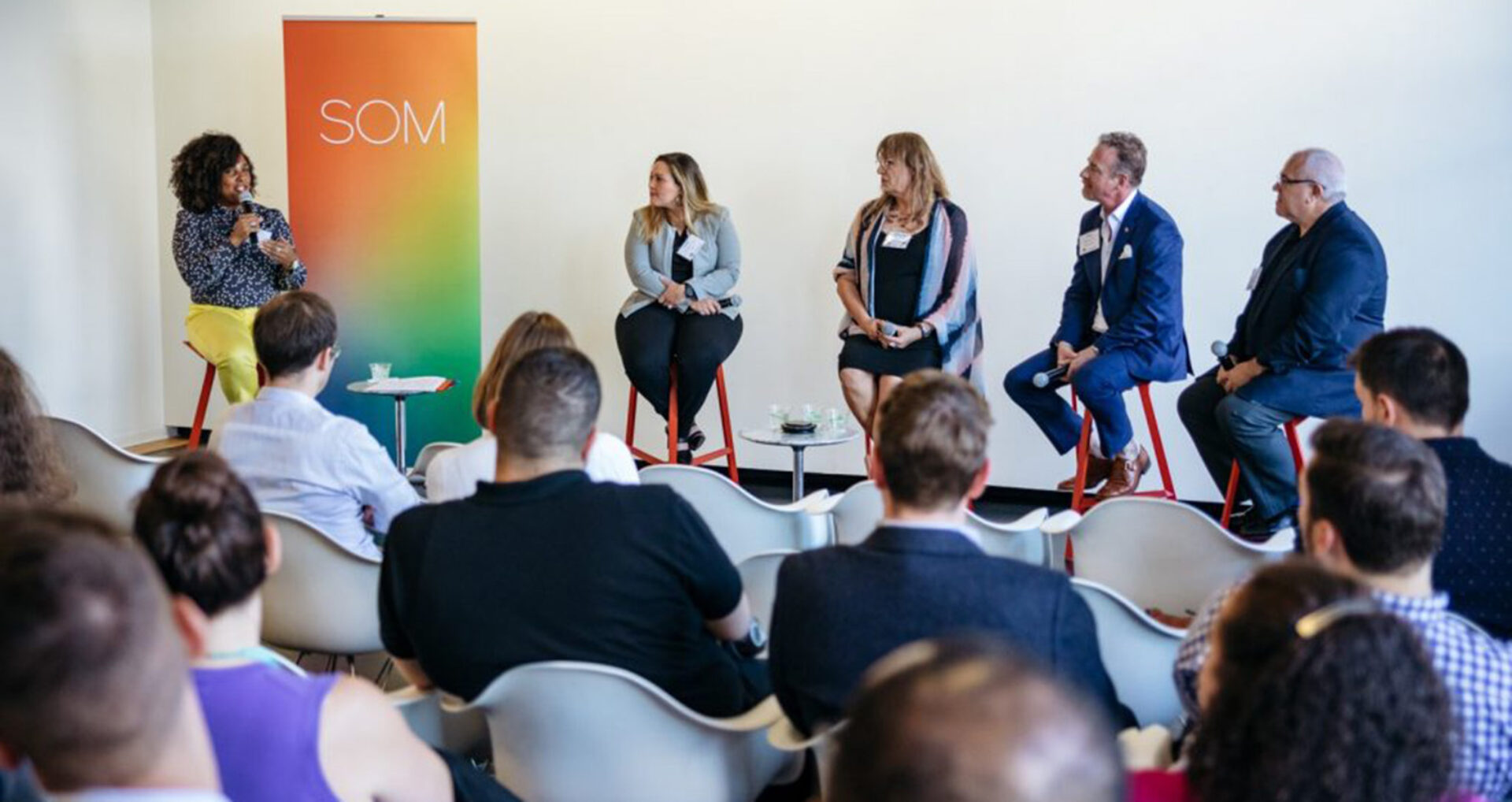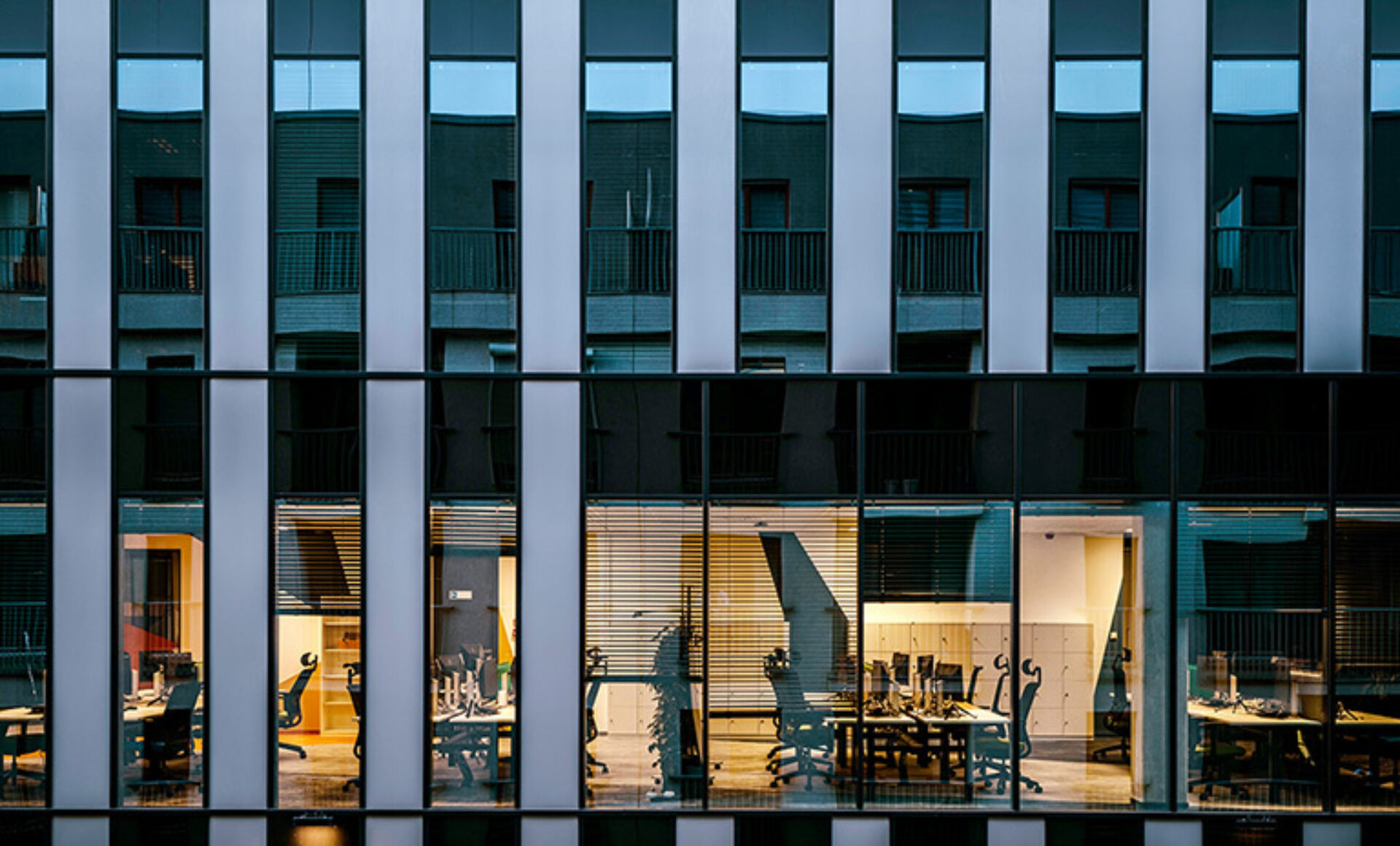Diversity and inclusivity in the workplace have taken center stage in recent years, sparking pivotal conversations on equity, representation, and reimagining spaces. As the discourse evolves, professionals at the helm of this transformation have been instrumental in guiding firms towards a more equitable and inclusive future. Jason Pugh, AIA, NOMAC principal and global director of diversity, equity, and inclusion at Gensler, and Yiselle Santos Rivera, AIA, NOMA, principal and director of justice, equity, diversity, and inclusion at HKS are two such influential voices. In this conversation, they shed light on the intricacies of embedding Justice, Equity, Diversity, and Inclusion (JEDI) principles in firm policies and practices, the nuances of designing inclusive spaces, and their vision for the future of equitable workplace design.
Where does one start when seeking to implement or establish a JEDI program within a firm?
Jason Pugh: You should first identify how JEDI aligns with your company’s mission statement and guiding principles. If there are clear connections, it will be easier for leadership to adopt. If not, reevaluating and redefining the firm’s guiding principles and North Star should take precedence.

Image courtesy of Jason Pugh
Yiselle Santos Rivera: My recommendation would be to start with a leadership-approved, firmwide evaluation of the organization's existing policies, practices, and metrics. This should include a detailed analysis of demographic data across the organization, spanning studios, practices, and various offices. Additionally, the organization's engagement with outreach programs like K-12, ACE, HipHop Architecture, and Arquitina, which are geared towards promoting equity and diversifying the future talent pool, should be taken into account. Equally significant is the active participation of our membership and leadership in associations such as NOMA, LGBTQIA+ & Allies committees, and Arquitina. An introspective look into both our formal and informal employee affinity and identity resource groups is also essential. Concluding, it's pivotal to appraise the organization's commitment through scholarships and financial contributions to entities emphasizing equity and diversity issues.

Image courtesy of Yiselle Santos Rivera
What are the important factors to consider when designing for a more equitable and human-centric work environment?
JP: Flexibility is key. Providing a variety of workstations and spaces that allow for greater flexibility in the way people work, collaborate, concentrate, and engage is critical to creating more equity across a space and workplace.
YSR: I believe that the most important factor when designing for inclusion and belonging is the understanding that one-size-fits-all solutions and universal design only benefit a few. Another important aspect is the realization and self-awareness that we all understand and define culture differently. Culture is a set of patterns we understand given our lived experiences and our world view. These define the why and how we make decisions. Focusing on the who, the complexity of who we are, and who we design for must center the early visioning and goal-setting process for any design project.
With so many companies serving hybrid workforces, creating a range of spaces seems important to accommodate today's employees. What do those spaces look and feel like, and how do they accommodate JEDI issues such as neurodiversity, race, ethnicity, and gender?
JP: Creating a flexible and adaptable space that accommodates a wide variety of uses and tasks with controllability is the target goal. Recognizing the physical and environmental needs of end users who have sensitivities to light, sound, temperature, mobility, etc. can be captured with universal design strategies. Finding creative ways to fulfill the need for privacy, mother rooms, prayer rooms, private bathrooms, showers, etc. should be prioritized and accessible for all employees.
YSR: Designing for inclusion needs to have a solid basis in the target audience, and the specific needs of the user, and must include choice, much more than variety, as there are no monolithic groups in the world. We exist at the intersection of all our identities. Spaces should look and feel in alignment with the goals of the organization and the audience that the space should cater to. Spaces should be defined by a person's ability to make the choices in how they want to work, from technology, lighting, acoustic, etc. We can create variety in the spaces we develop, but those may still be prescribed for a particular purpose or person. What if a person could choose not only the space but it feels like color, noise, beyond a zone or area within the workplace?


G Marks
Can you speak a little about the changes you’ve seen in the work cultures you are designing for?
JP: Hybrid work environments are now centered around collaboration and bringing people together. There is a greater priority to increase amenity spaces and provide flexible work environments that can enhance and celebrate a firm’s culture.
YSR: The wonderful changes I’ve seen are built on accountability and transparency for collectively defined goals. There is greater intentionality in bringing more voices to the table, providing clarity in expectation, and giving people a voice to share their needs while acknowledging that culture building takes time, humility, and empathy. We may not always get it right as we start the inclusion journey and not everyone may get everything they want but there should be comfort in the acknowledgment that there is a balance in the decision-making process through collective compromise benefiting the whole.
Can you share any practical advice for both designers working toward implementing a JEDI focus?
JP: Listen and engage. Listen to your people, clients, and end users to fully understand their challenges and needs and engage with sincerity and authenticity. Work hard to create safe spaces where everyone can grow and learn, and be mindful that change doesn’t happen overnight, but is achievable with small daily steps forward towards your target DEI goals.
YSR: My advice is to research and learn about existing frameworks that support J.E.D.I. – Collective D(esign), AIA Guides for Equitable Practice, JUST Label, WELL Health Equity Scorecard, DeafSpace, LFRT J.E.D.I. Advocacy Guides, etc. These frameworks and conversation provide context important to define a process that will help designers understand what to consider and what to look for when designing spaces for belonging. We first have to understand the context, and the language being used, dispel myths, and consider who we are designing for in order to shift our mindsets to consider other cultural views and patterns that better serve our intended audience.
What are the things that excite you most right now about the design of the workplace and equitable culture, now and in the future (5-10 years ahead)? (You can think of this both in terms of your own firms, and your clients.)
JP: I’m excited by the growing focus and support of JEDI efforts by our clients, consultants, and industry peers. Despite a few opposing views and legislative challenges in a select few states, we’re seeing companies respond by doubling down on their efforts, partnering with outside companies, and providing public access to their stats and metrics which is creating more transparency across the building design industry.
YSR: I’m most excited about the intersection of physical and digital space through the lens of the built environment and AI. The technical aspects of our profession are already being automated, yet the future of our industry will be in how we engage and support people. People strategy will be integral and paramount with business strategy. I envision in the next 5-10 years that designing for J.E.D.I., employee satisfaction and engagement would be a critical qualifier in measuring success in our projects, yet most importantly, in our organizations.







